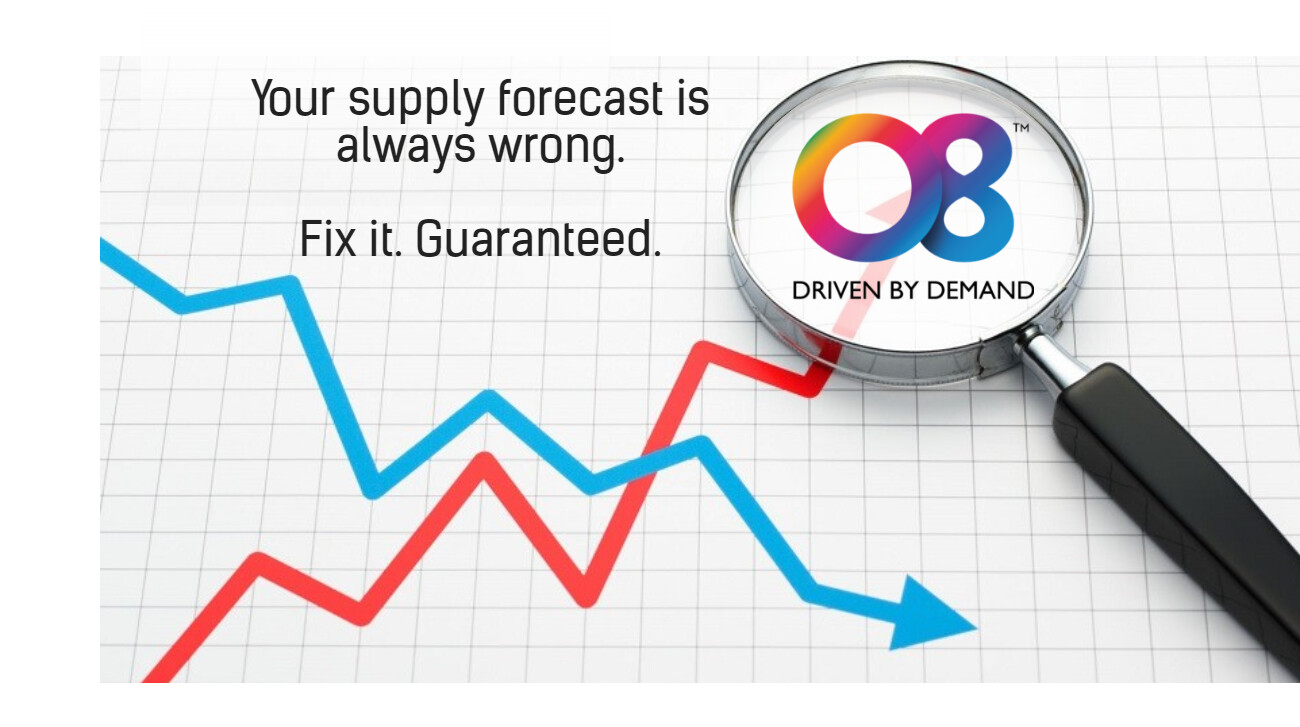
“Post COVID-19, the global logistics market size is projected to grow from USD 2,734 billion in 2020 to USD 3,215 billion by 2021, at a Y-O-Y of 17.6%.” – Research and Markets
Hint. Too late, it’s already here.
The outlook for 2021 isn’t expected to be too rosy. The predictable but unpredictable impact of COVID-19 on the supply chain has created logistical nightmares throughout multiple industries and brought forecasting weaknesses to the forefront.
Supply chain vendors paint a colorful picture of a highly digitized supply chain. Like magic, forecasting, planning, and execution are fully automated. The vision is a system of self-aware systems, operating without human intervention, adapting to solve problems, and responding dynamically to changes in demand or supply.
Unfortunately, it doesn’t work that way.
The problem is firmly entrenched in the process. As everything in the forecast is assumed to be true, when it is not, the forecast becomes distorted. Compensating with extra lead time and extra capacity buffers make up for unplanned variance – combined, this increases cost and diminishes predictability of outcomes. In other words….“really distorted.”
This is not a technology problem. Like a broken clock that is correct twice per day, at best, even a great forecast is seldom accurate. Poorly derived inputs place even the best systems and processes into jeopardy. Garbage in, garbage out.
The supply planning process is the problem. The ERP (MRP) system you employ reads, plans, and executes, all at the same time.
But, if you de-risk the forecast, suddenly fixing the process is cheaper, simpler, and easier to implement than you might expect.
One of our customers, a major global brand, made the decision to centralize all planning with a set of rules that govern the business. Deploying a DDMRPII™ approach enforced a global standardization of processes.
With a simple modification of the planning process, multiple silos were eliminated. In a very short period of time they saw massive improvements in performance and efficiency. Planning cycles now take a day instead of a month. They enjoyed a greater than 15X ROI within months of the completed implementation.
When you remove the material requirements planning (MRP) dependency of “WHEN something happens,” you remove the need for an unachievable level of forecast accuracy. You also remove significant cost and insecurity from your planning process.
By unlinking your supply planning from the forecast, your ability to execute becomes aligned with demand and the business can finally understand its true market demand with service levels and fill rates nearing 100%. You can stop recalculating buffers everyday.
Our twenty years of demand driven experience has taught us that when you recalculate buffers daily, you can never really understand your plan, as it’s changing every day – there are simply too many dynamic elements for people to be fully aware of and understand. Consequently, the plan’s inherent daily assumptions become hidden from the rest of the business. In an enterprise S&OP process it is good practice to understand the working capital implication of your business decisions. You want to know that a standard process will deliver a planned outcome. Yet, daily changes introduce daily uncertainty, reduced transparency and reportability.
The full benefit of new methods and technologies is only realized when the organization becomes disruption resilient with people and process. De-risking the forecast – and implementing that process change – has challenges that can be addressed without financial risk.
Is it realistic to expect to efficiently execute a plan that cannot be understood?
Operational capacity is often defined by historic demand. What does this mean? When you have a SKU by SKU plan built on historical demand, you have a baseline and can implement rules based on company process, policy, and capacity, upon which all future decisions are made.
When new information or new orders arrive, you can adapt and adjust the rules already in place.
The plan is the plan. It doesn’t need to change every week. Everyone knows the rules that form the plan. When you have a plan, you can operate inside that plan where there is a clear link between your input, your capability, market demand, and your working capital.
The supply plan is the plan. It doesn’t need to change every week. Everyone knows the rules that form the plan. When you have a plan, you can operate inside that plan where there is a clear link between your input, your capability, market demand, and your working capital.”
If you want the plan to perform differently, you can toggle the plan’s rules. You can change the shape of demand, you can change lead times, you can increase or decrease the size of each batch. One of the benefits of operating within the plan is when you segment your supply chain you become much more agile in how you are able to respond to the market.
Sticking with the plan does not prevent you from making mid-cycle corrections. As long as you understand your lead time, you can manage corrections. If your longest lead time is three months and you think you have an opportunity to sell more in two months, the answer should be “No – let’s stick to the plan.” These influence your relevant time horizons in S&OP.
If the new opportunity is a big opportunity but an exception, sticking with the plan helps you treat the opportunity (and the exception) as a one-off event. You can speak with your suppliers candidly and explain that it is a one-off event. Instead of a fire drill, responding to the plan becomes a management exercise instead of a supply plan overhaul.
The full benefit of new supply planning technologies is only realized when the organization adapts, becomes disruption resilient with people and process. De-risking the forecast – and implementing that process change – has challenges that can be addressed without financial risk.
Whether you know it or not, the current crisis (and the next) frees you from the legacy constraints of “we’ve always done it this way” supply planning excuses. In fact, this is perhaps the best opportunity to make the case for supply planning transformation.
Resistance to fixing your supply planning process is short-sighted and even naive. Even better, you already have the historical data to de-risk the forecast without significant financial risk.
We resolve the chronic problem of unbalanced inventory and poor service levels – with supply and replenishment plans that practically eliminate the need for manual intervention and expediting.
If you are ready to think about transforming your supply planning function, you need to build a bulletproof business case.
Unlike other vendors who perform demand-driven simulations in a spreadsheet, O8 loads your historical data in the same supply planning application you’d deploy. No spreadsheets and no vendor smoke and mirrors. The O8 business case output is comprehensive, granular, and detailed, employing the reporting and analytics native to the application so you can see how everything works together.
Operational, inventory, and working capital improvements are clear and the detail to support them is substantial.
Once you receive your business case, our ROI guarantee is simple: we agree upon your improvement target, time frame, and we implement (usually in less than 90 days – and usually 100% remote). There is no cost for software until your improvement targets are achieved.
About O8 Supply Chain
At Orchestr8, we resolve the chronic problem of unbalanced inventory and poor service levels – with supply and replenishment plans that practically eliminate the need for manual intervention and expediting.
Our customers enjoy epic improvements in supply chain performance using a demand-driven alternative that creates and executes agile supply plans that quickly respond to market changes. Plus, results are guaranteed.

